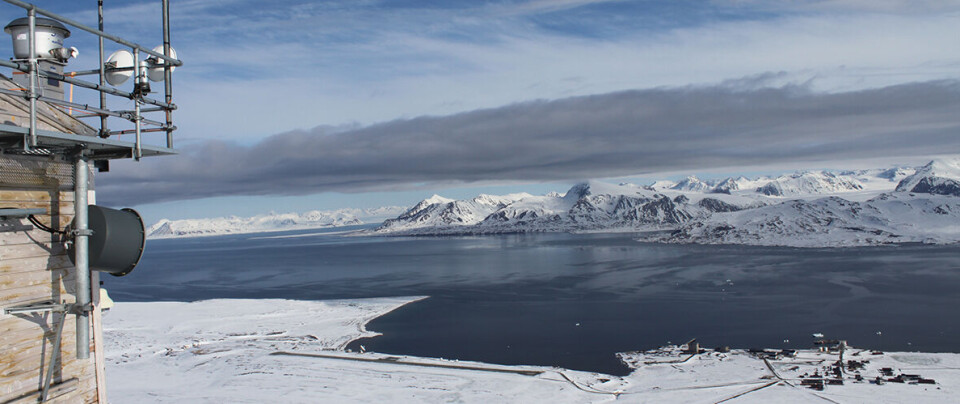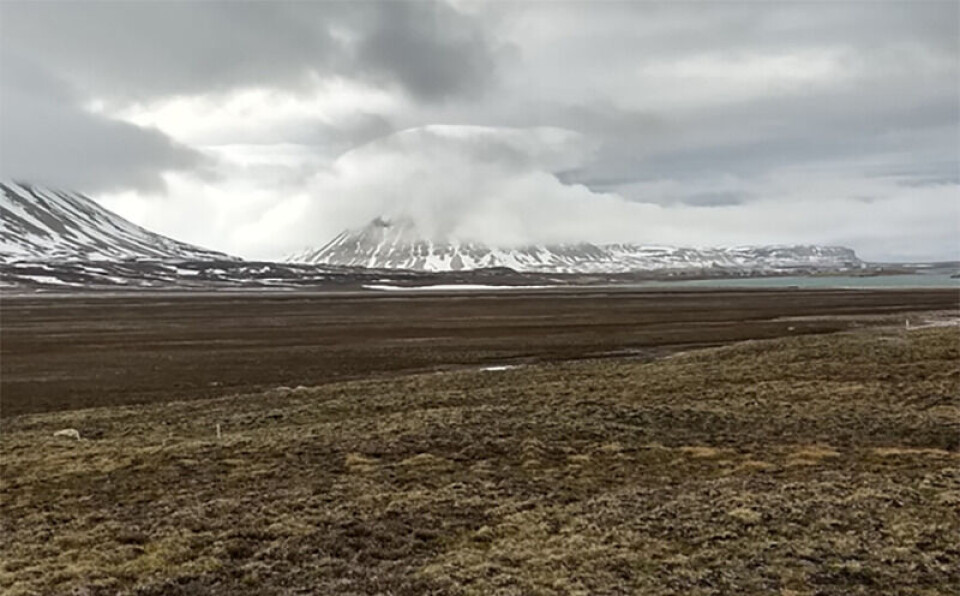THIS CONTENT IS BROUGHT TO YOU BY NILU - Norwegian Institute for Air Research - read more

Researchers have discovered how biological particles affect the clouds over the Arctic
This could have significant implications for climate research and our understanding of the rapidly changing Arctic climate.
Research on the connection between biological particles and the formation of ice in Arctic clouds was conducted over multiple years at the Zeppelin Observatory. Biological particles originate from living organisms and can include things like pollen and fungal spores.
The Zeppelin Observatory is situated on the remote Norwegian archipelago of Svalbard, in the High Arctic.
In a new article in Nature Communications, a research team from Sweden, Norway, Japan, and Switzerland shows how this can have great significance for climate research and our understanding of the rapidly changing Arctic climate.
Particles affect clouds
Clouds are important for the Earth's climate. They can have both a cooling effect by reflecting sunlight, as well as a warming effect by absorbing heat radiation from the ground.
Particles that float around in the atmosphere are called aerosol particles or simply aerosols. These play an important role in the formation of clouds in that they can form cloud droplets and ice crystals.
Size, number, and composition are among the factors that determine which aerosols form cloud droplets and ice crystals.

Small changes can affect the clouds
Exactly how aerosols affect cloud formation, and the properties of clouds is one of the main sources of uncertainty in climate models.
In remote areas such as the Arctic, even small changes in the aerosol particles can have a major impact on the composition of the clouds: Whether they consist of small cloud droplets, ice crystals or a mixture, to what extent they reflect sunlight and heat radiation from the ground – and whether there will be precipitation.
These properties are important for whether the clouds have a cooling or warming effect on the climate.
Biological particles
Certain biological particles, i.e., particles originating from living organisms, form ice crystals at much higher temperatures than other particles. This is partly due to the particles' unique structure or their chemical composition.
Without particles present, atmospheric ice crystals will not form until the temperature drops below -38 °C. As the researchers show in this study, there is a significant correspondence between biological particles and particles that form ice crystals at temperatures as high as -15 °C.
As the Arctic warms, the sources of the various aerosol types may change. A warmer climate can for example lead to more bare land, more vegetation, and less sea ice.
This can lead to increased levels of mineral dust, biological particles, and sea salt particles – affecting clouds and the climate.
Uses UV radiation to count biological particles
The researchers used optical technology based on light scattering and UV-induced fluorescence to identify and count the biological particles. In simpler terms, each individual particle receives energy in the form of UV radiation.
Molecules of biomolecular origin, i.e., occurring naturally in living organisms, then emit this energy in the form of fluorescence, which is detected by the measuring instrument.
“High sensitivity is crucial for detecting these particles in such low concentrations as observed in the Arctic. It is akin to finding a needle in a haystack,” Gabriel Freitas says. He is a PhD student at Stockholm University.
The concentration of biological particles is highest in summer, and the agreement with ambient temperature, bare ground and vegetation shows that they are of arctic, terrestrial origin.
The presence of these biological particles was also confirmed using electron microscopy and mass- spectrometry.

“Arabitol and mannitol are molecules known as sugar alcohols, and they are present in various microorganisms. When we find them in the air, as in the present study, it is because they are found in fungal spores. They may originate from local sources, or they may have been transported through the atmosphere over long distances,” Karl Espen Yttri says.
He is a senior scientist at the Climate and Environmental Research Institute NILU.
Microbes contribute to the formation of ice crystals
Aerosols that form ice crystals are also called ice-nucleating particles. The number of such particles, and the temperatures at which ice formation occurs, were measured at two different laboratories. Both were based on particles collected on filter samples exposed to ambient air over a period of one week.
Associate Professor Yutaka Tobo at the National Institute of Polar Research in Japan explains that the method they used can quantify the ice nucleating ability of aerosol particles in water droplets at temperatures ranging from 0°C to -30 °C.
By heating the filters to 95 °C, research fellow Franz Conen from the University of Basel could determine that more than 90 per cent of the particles that initiated ice crystal formation at high temperatures (-12 °C to -15 °C) in summer were of biological origin. The corresponding proportion in winter was still as high as 50 to 85 per cent.
The analyses and measurements combined constitute evidence that biological particles dominate the concentration of ice crystal-forming particles at high temperatures in the Arctic.
This knowledge can contribute to better climate models
Paul Zieger, Associate Professor at Stockholm University, and project leader, emphasises how important these findings are for climate science.
“This research offers critical insights into the origin and properties of biological and ice nucleating particles in the Arctic,” he says. “It enables climate model developers to improve the representation of aerosol-cloud interactions in models and reduce uncertainties related to anthropogenic radiative forcing estimates.”
Less sea ice and more snow-free tundra in the coming decades will give rise to increased biological particles in the Arctic.
A better understanding of the connection between these particles and cloud formation therefore provides the necessary insight into the ongoing and future changes in the vulnerable Arctic environment.
Reference:
Freitas et al. Regionally sourced bioaerosols drive high-temperature ice nucleating particles in the Arctic, Nature Communications, vol. 14, 2023. DOI: 10.1038/s41467-023-41696-7

This content is paid for and presented by NILU - Norwegian Institute for Air Research - read more
This content is created by NILU's communication staff, who use this platform to communicate science and share results from research with the public. NILU is one of more than 80 owners of ScienceNorway.no. Read more here.
More content from NILU:
-
Summer in Central Europe: Drought and wildfires to be expected
-
How do you design a healthier place to live?“I would prioritise easy, car-free access to everything you need in your daily life"
-
Fires in tropical forests affect more than just the forests
-
Engineer Sam Celentano found 222 grams of gold in a laboratory. What was it doing there?
-
Air pollution levels are still too high across Europe
-
Smoke from Canada is still coming in over Norway




































